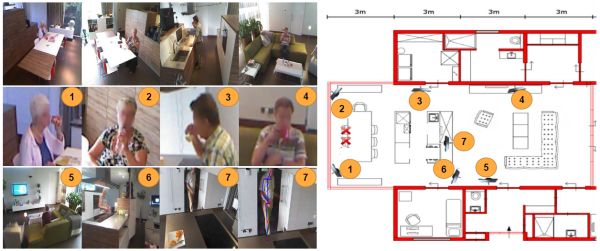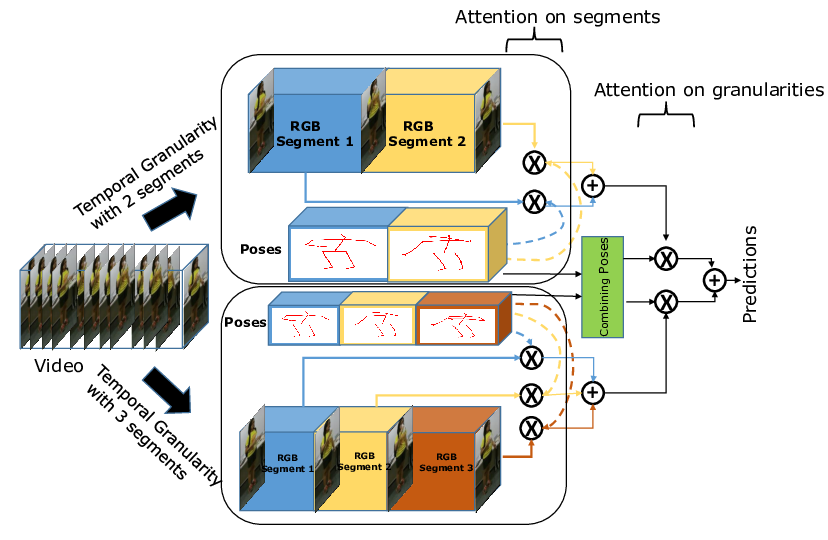Section: New Results
Toyota Smarthome: Real-World Activities of Daily Living
Participants : Srijan Das, Rui Dai, François Brémond.
The performance of deep neural networks is strongly influenced by the quantity and quality of annotated data. Most of the large activity recognition datasets consist of data sourced from the Web, which does not reflect challenges that exist in activities of daily living. In this work, we introduce a large real-world video dataset for activities of daily living: Toyota Smarthome. The dataset consists of 16K RGB+D clips of 31 activity classes, performed by seniors in a smarthome. Unlike previous datasets, videos were fully unscripted. As a result, the dataset poses several challenges: high intra-class variation, high class imbalance, simple and composite activities, and activities with similar motion and variable duration. Activities were annotated with both coarse and fine-grained labels. These characteristics differentiate Toyota Smarthome from other datasets for activity recognition as illustrated in 16.
As recent activity recognition approaches fail to address the challenges posed by Toyota Smarthome, we present a novel activity recognition method with attention mechanism. We propose a pose driven spatio-temporal attention mechanism through 3D ConvNets. We show that our novel method outperforms state-of-the-art methods on benchmark datasets, as well as on the Toyota Smarthome dataset. We release the dataset for research use at https://project.inria.fr/toyotasmarthome. This work is done in collaboration with Toyota Motors Europe and is published in ICCV 2019 [21].
|
Looking deeper into Time for Activities of Daily Living Recognition
Participants : Srijan Das, Monique Thonnat, François Brémond.
In this work, we introduce a new approach for Activities of Daily Living (ADL) recognition. In order to discriminate between activities with similar appearance and motion, we focus on their temporal structure. Actions with subtle and similar motion are hard to disambiguate since long-range temporal information is hard to encode. So, we propose an end-to-end Temporal Model to incorporate long-range temporal information without losing subtle details. The temporal structure is represented globally by different temporal granularities and locally by temporal segments as illustrated in fig. 17. We also propose a two-level pose driven attention mechanism to take into account the relative importance of the segments and granularities. We validate our approach on 2 public datasets: a 3D human activity dataset (NTU-RGB+D) and a human action recognition dataset with object interaction dataset (Northwestern-UCLA Multiview Action 3D). Our Temporal Model can also be incorporated with any existing 3D CNN (including attention based) as a backbone which reveals its robustness. This work has been accepted in WACV 2020 [20].



